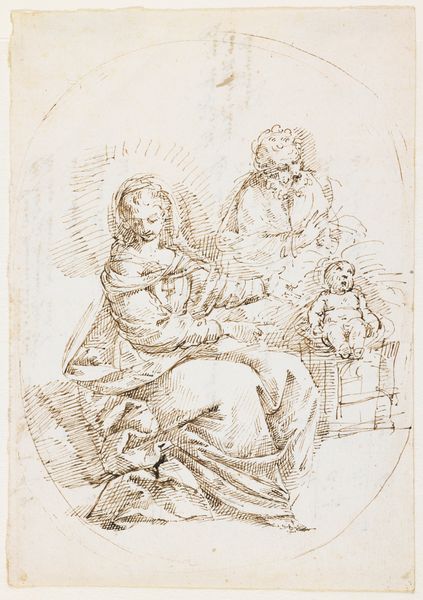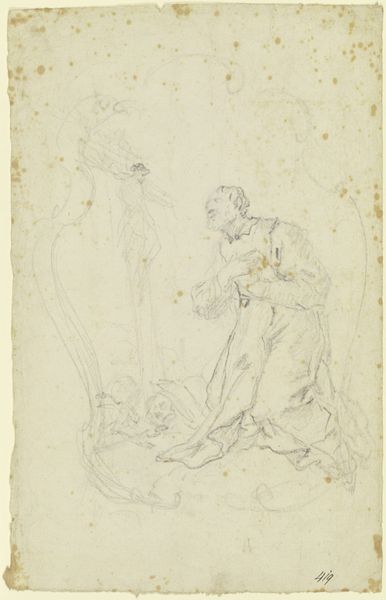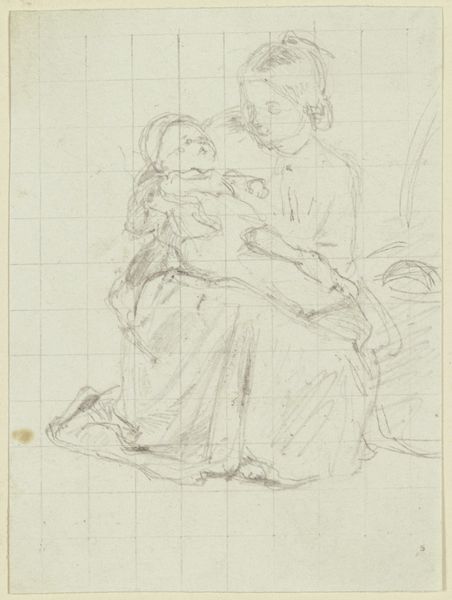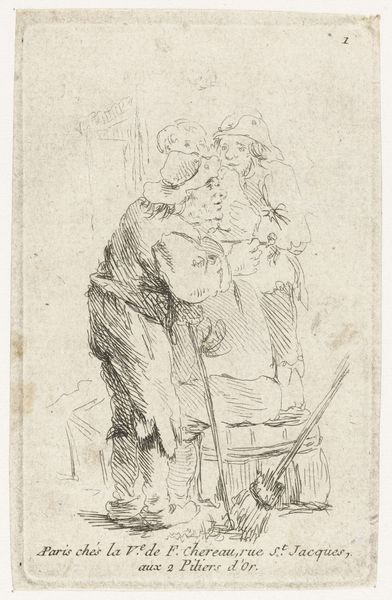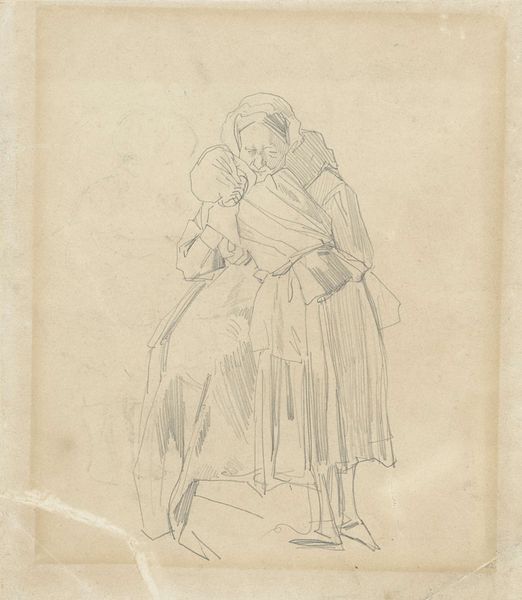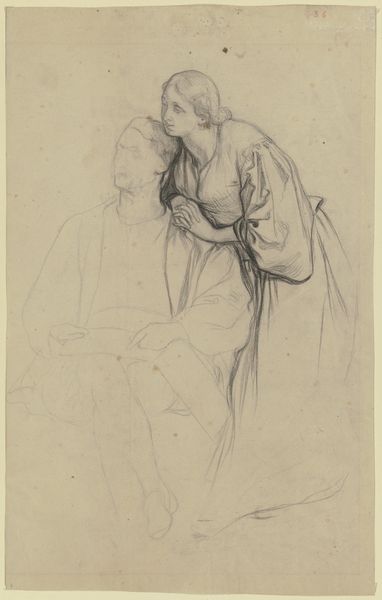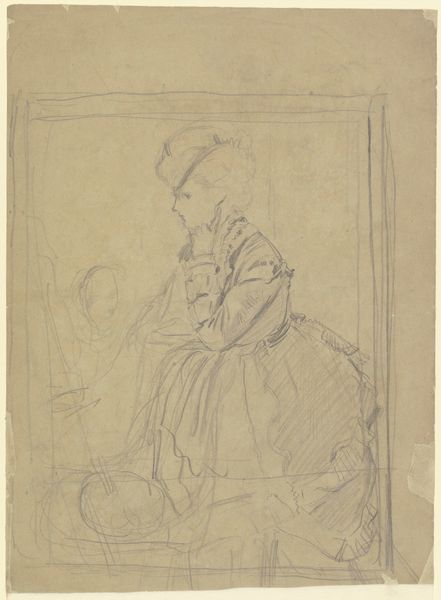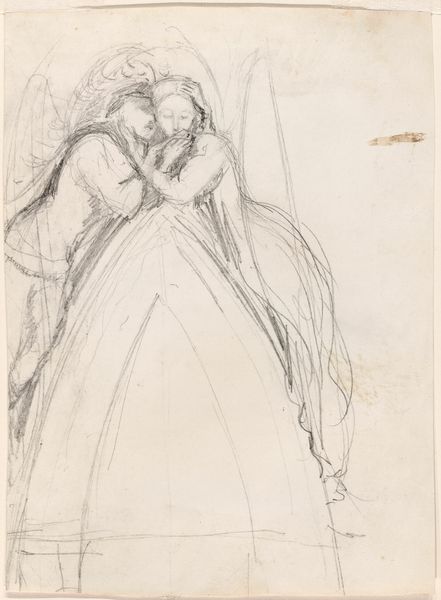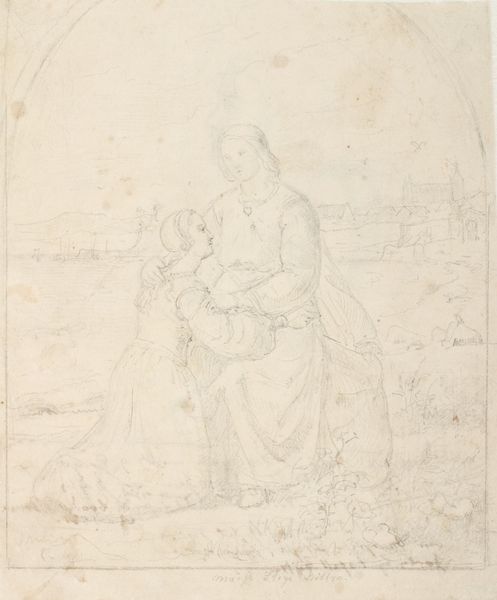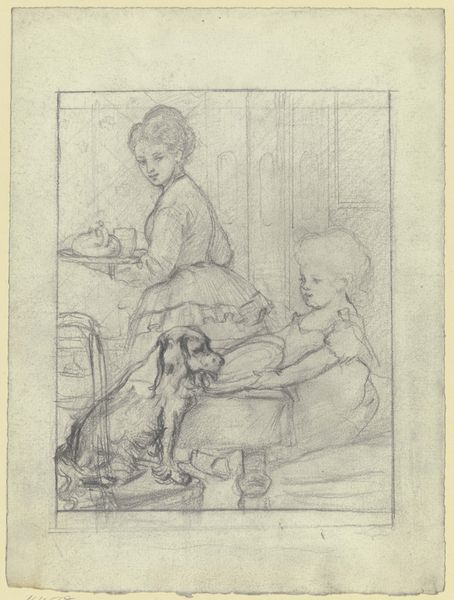
Ein Mädchen sitzt bei einer Wiege und hält mit beiden Armen umfaßt ein kleines Kind auf ihrem Schoß, die Gesichter aneinander geschmiegt
0:00
0:00
drawing, pencil
#
portrait
#
drawing
#
pencil
#
genre-painting
Copyright: Public Domain
Curator: Here we have a tender sketch housed in the Städel Museum; its title, "Ein Mädchen sitzt bei einer Wiege und hält mit beiden Armen umfaßt ein kleines Kind auf ihrem Schoß, die Gesichter aneinander geschmiegt," roughly translates to "A Girl Sits by a Cradle, Embracing a Small Child on Her Lap." It is a drawing created with pencil by Philipp Rumpf. Editor: It strikes me as intensely intimate. The pencil lines are soft, conveying such gentleness between the figures— almost blurring their identities into pure emotion. It also speaks volumes about the expectation that women always be primary caregivers. Curator: Mother and child are primordial images—the Madonna, the Venus Pudica. Artists like Rumpf frequently return to it, often imbuing the motif with profound layers of cultural meaning and psychological resonance that reach into the collective subconscious. Editor: And, yet, even within those idealized archetypes, lived realities assert themselves. The sketch suggests the complex social structures surrounding motherhood. It is impossible to not to read this in terms of gendered expectations, unpaid labor, and societal pressure to make certain kinds of sacrifices. I think here, in her quiet moment, her identity is solely fixed to the labor of motherhood. Curator: Such sketches provided artists ways to experiment and capture quick impressions. Consider also that cradles themselves are potent symbols – birth, life’s beginnings, and protection – objects resonant in any culture that values new life. It's a quiet meditation on beginnings, love, safety, with universal appeal beyond a specific time or context. Editor: Yes, it's that balance of tenderness and constraint I see, existing within very real socio-economic pressures of the time. It reminds us that maternal bonds don't exist outside the constraints of gender and labor—the female and her assigned care-giving tasks. Curator: Seeing how this sketch continues to spark such varied reactions shows the artwork is very successful at connecting with different lived experiences. Editor: Exactly—It shows how even seemingly simple compositions offer insights that bridge past, present and different social perspectives, inviting us to engage with their emotional and political dimensions.
Comments
No comments
Be the first to comment and join the conversation on the ultimate creative platform.
